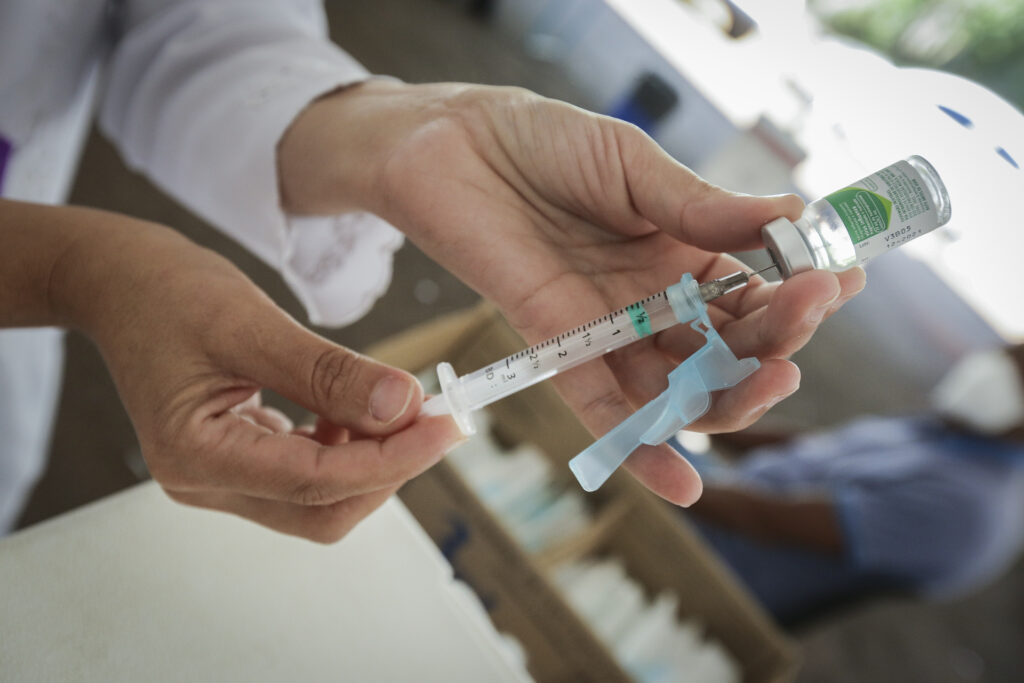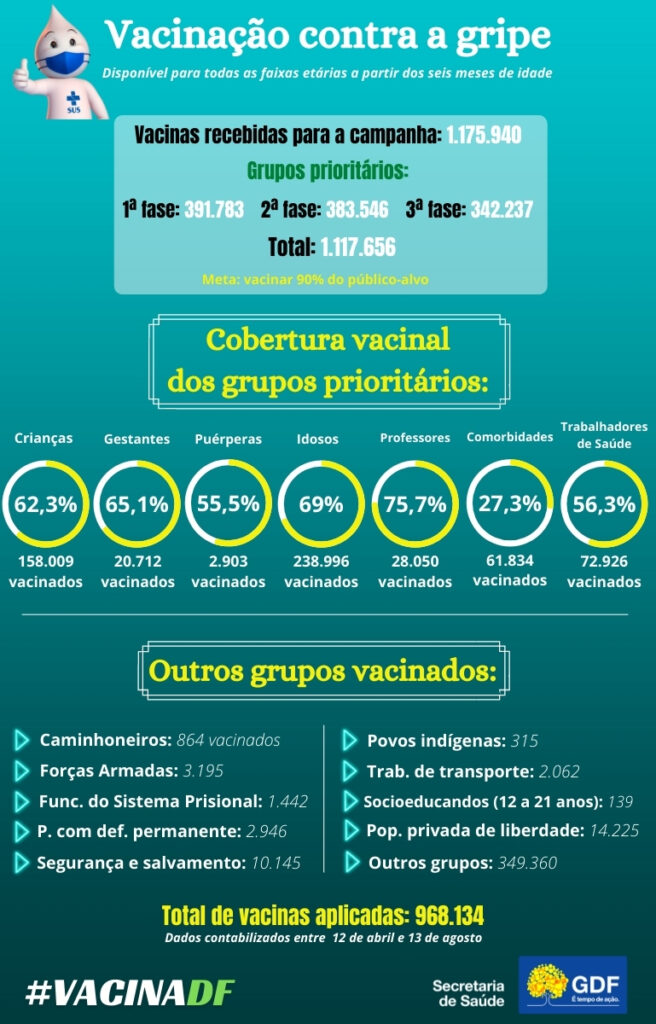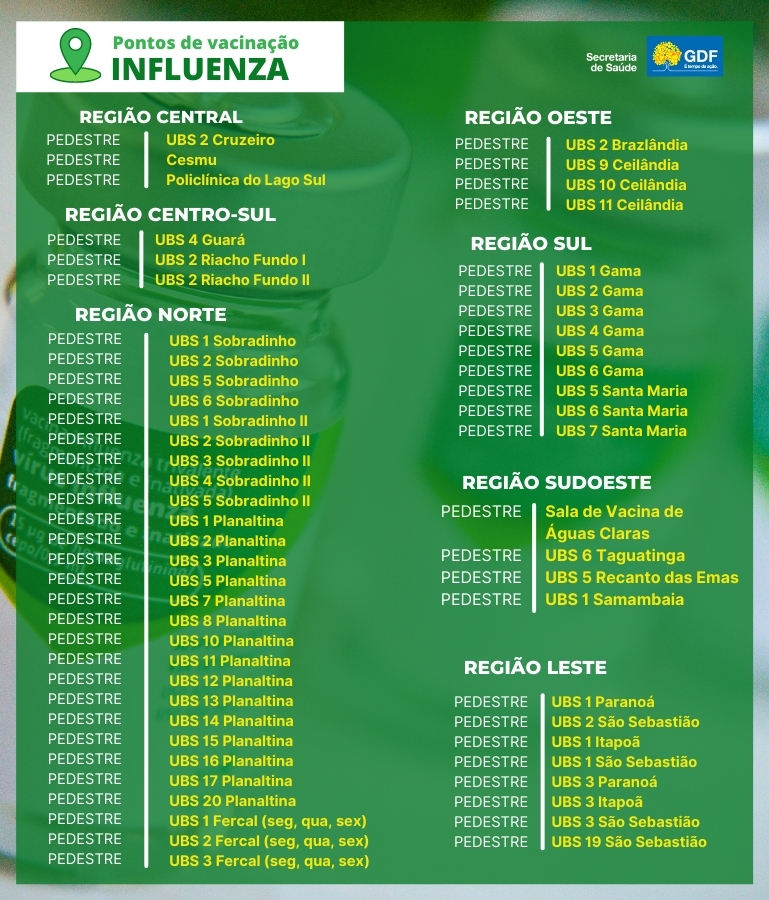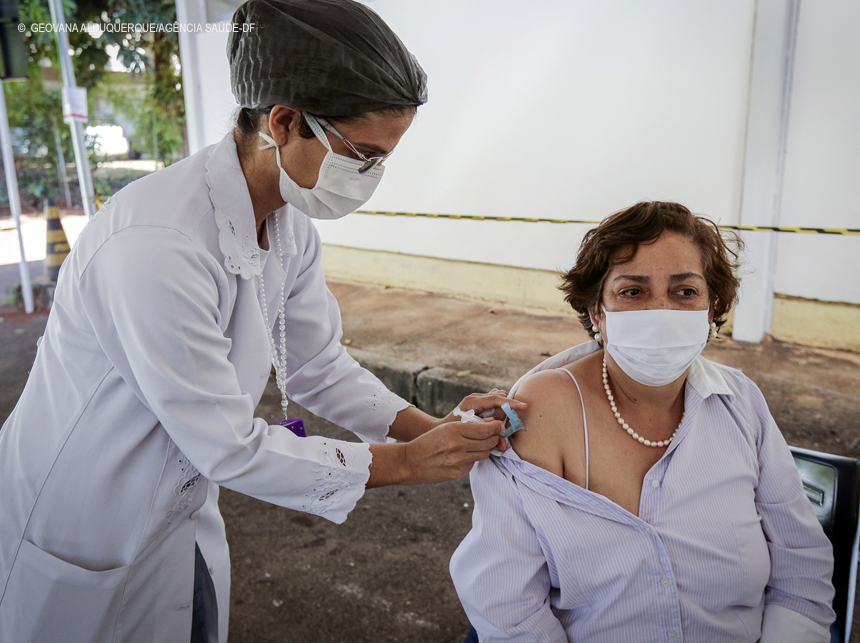Four months after the start of the influenza vaccination campaign, the Federal District has not yet been able to reach the target recommended by the Department of Health, which is to have at least 90% of the priority public (see below) vaccinated against the influenza virus. The vaccine guarantees protection against influenza A, H1N1, H3N2, and influenza B viruses. To receive the vaccination, just find the nearest vaccination point. Since July 5, the immunizing agent has been available to those six months of age or older.

The flu vaccine reduces a person’s chances of contracting the most severe form of the disease. The first groups to receive the vaccine were children aged over 6 months to less than 6 years (5 years, 11 months and 29 days), pregnant women, postpartum women, the elderly and health professionals who were part of the risk group. Vaccination coverage for this audience is below target. Children, pregnant women and postpartum women, although vaccination is started first, have not yet reached coverage of at least 70%.
The group with the highest coverage to date, although still far from 90%, is teachers (75.7%), followed by the elderly (69%) and pregnant women (65.1%). Considering the vaccinated population outside the priority groups, the number of vaccinated comes to 349,360.
Advertising
Look at the number of vaccinations taking into account the priority categories:

The vaccine is not indicated for children younger than 6 months of age, and people with a history of anaphylaxis in previous doses who have contraindications for subsequent doses. However, in most cases, influenza vaccines are highly safe and well tolerated.
health areas
Among the health regions, the central region has the highest vaccination rate for groups of children (82.3%) and pregnant women (136.7%); Southern Territory for the maternal group (91.2%) and the elderly (97.7%); Central and South Region for Health Workers (65.0%) and Eastern Region for Teachers’ Groups (163.7%) and Comorbidities (51.8%).
Percentage greater than 100% occurs because the area has vaccinated people beyond the expectations of the population in the area. That is, it may have vaccinated individuals who reside in other areas of the Federal District or in other states.
the disease
Influenza is an acute respiratory infection caused by viruses A, B, C and D. Virus A is associated with epidemics and epidemics, has a seasonal behavior and an increase in the number of cases occurs between cold weather seasons. The Ministry of Health maintains influenza surveillance in Brazil through sentinel surveillance for influenza syndrome (SG) and severe acute respiratory syndrome (SRAG) in hospitalized patients.
These areas mainly aim to identify circulating respiratory viruses, allowing monitoring of the demand for care in cases and deaths in hospitals. Therefore, it is important to participate in the campaign every year.
periods
If you received the covid-19 vaccine from AstraZeneca, Janssen, or Pfizer-BioNTech, you must wait 14 days after the first or second dose to receive the flu vaccination. If you have received CoronaVac, the vaccination is recommended 14 days after you have finished the course of vaccination with the second dose.
Since the beginning of the campaign, 968,134 doses of vaccine have been applied in the Federal District. For the campaign, DF received 1,175,940 doses, 5% of this total being part of the percentage of technical loss.
See where the vaccination is done:


“Wannabe internet buff. Future teen idol. Hardcore zombie guru. Gamer. Avid creator. Entrepreneur. Bacon ninja.”


